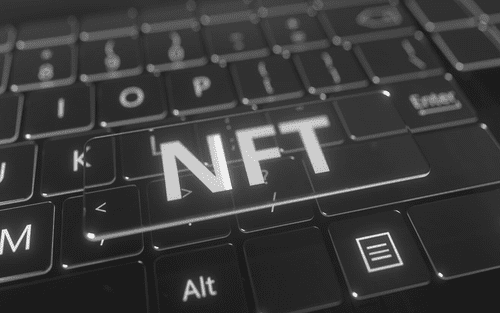Non-Fungible tokens (NFTs) have become an enormous market in today’s society. In 2021 alone, the NFT market reached a value of $41 Billion. This is no small sum, and to put it in perspective, the traditional art market in 2021 had a market value of just over $50 Billion.
It’s fairly easy to comprehend traditional art. People think of famous paintings or artifacts. These things are made by distinct individuals or come from an important moment in history. Their value obviously stems from factors such as their actual physical existence, their age, their creator, and their scarcity.
An NFT is different. Basically, an NFT is a type of digital asset that is meant to represent a form of ownership in various real-world objects like art, music, and videos. NFTs are often either one of a kind, or part of a very limited production. They also have unique identifying codes to determine actual ownership. Essentially, an NFT can either 1) represent that a person actually owns the rights to the asset and that buying an NFT means you are buying the asset the NFT represents or 2) merely buying the data for an asset, in which the NFT contains extra information about the asset tied to them. Such data might include the nature of or further description of the asset, perks related to an asset, details about the asset’s true owner, a record of the asset’s history, or any other pertinent information. There’s still a lot of continuing confusion about asset ownership and NFT’s. Either way, in the case of representing ownership, how is having an NFT really that different from just having a registered copyright?
A copyright is a type of intellectual property that protects original works of authorship as soon as an author fixes the work in a tangible form of expression. In relation to copyright law, there are a lot of different types of works a copyright can apply to. A copyright can cover paintings, photographs, illustrations, music and other sound recordings, books, blogs, movies, architectural, and other various forms of works and art. Like an NFT, they receive a unique registration number if they are in fact registered with the United States Copyright Office. The length of copyright protection is not limited to tangible art either, standard copyright law, as well as Digital Millennium Copyright Act, can cover various forms of digital and online copyrights as well. Also, like an NFT, ownership of a copyright in an item can be entirely different from ownership of the item to which the copyright is tied. Copyrights can be separately licensed or directly sold. This means that a person can purchase the sole and exclusive copyright to an original work without actually owning the original work.
In reality then, perhaps the only significant difference between having an NFT and a copyright is the extent of recognized legal protections, but more importantly, a connection to a blockchain (which is essentially a digital trading ledger that many cryptocurrencies are tied to). While there is no specific/exclusive marketplace for copyrights, there is also nothing to prevent copyrights from being sold or otherwise being traded on one, including connecting them to a blockchain.
Overall it seems that a Copyright can serve many of the same functions that an NFT does. You can separate it from the asset. You can sell it. The same exclusivity that makes NFT’s so valuable can apply just as easily to copyrights. What might even give copyrights an edge over NFTs is the well-established law that accompanies them.
If you have questions or would like to register a copyright, then seek the advice of an intellectual property attorney. Contact the SW&L intellectual property team at 701-297-2890 or email us at: info@swlattorneys.com.
The information contained in this article and on this website is for informational purposes only. Do not rely on the information on this website as legal advice.










